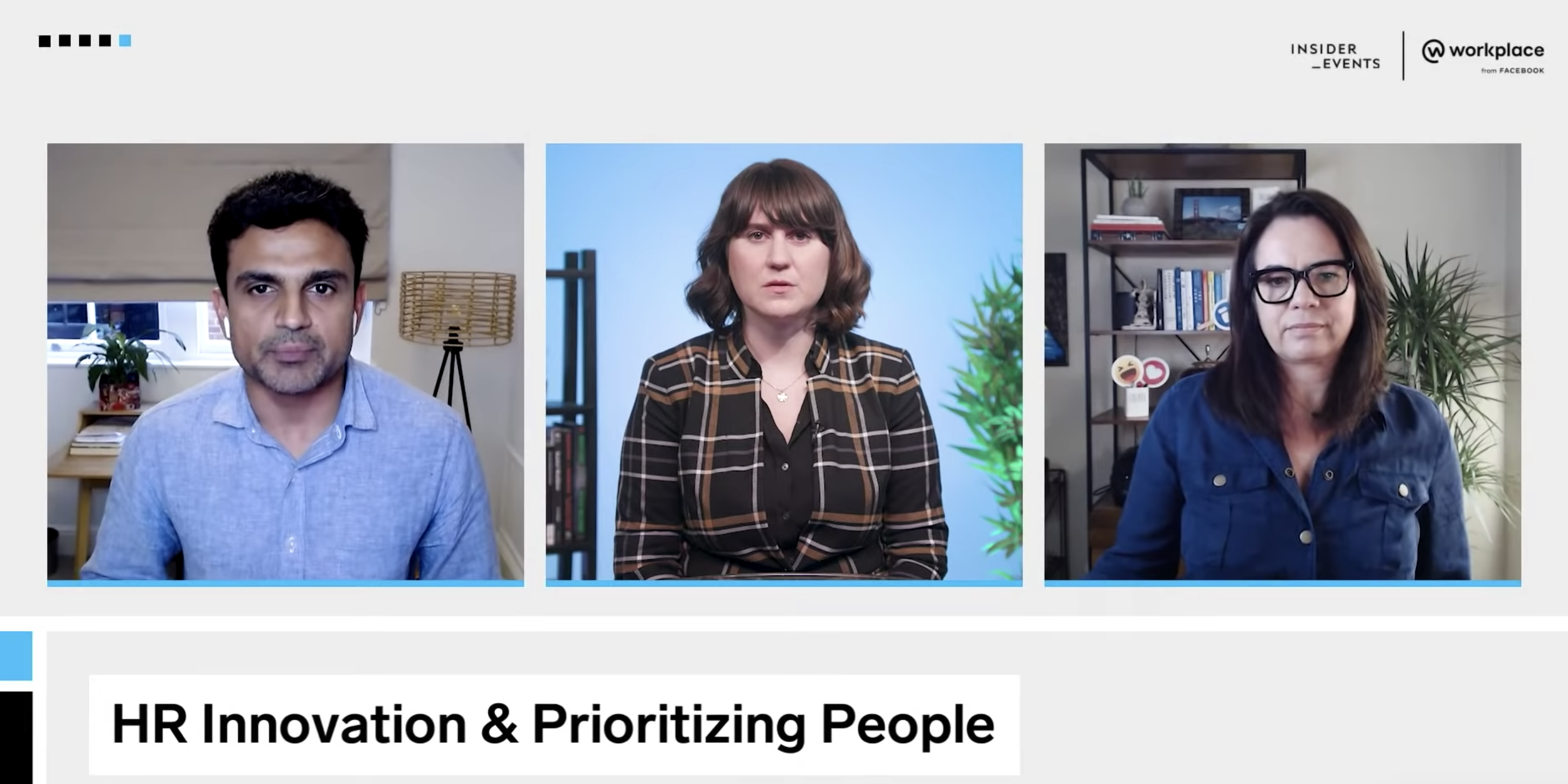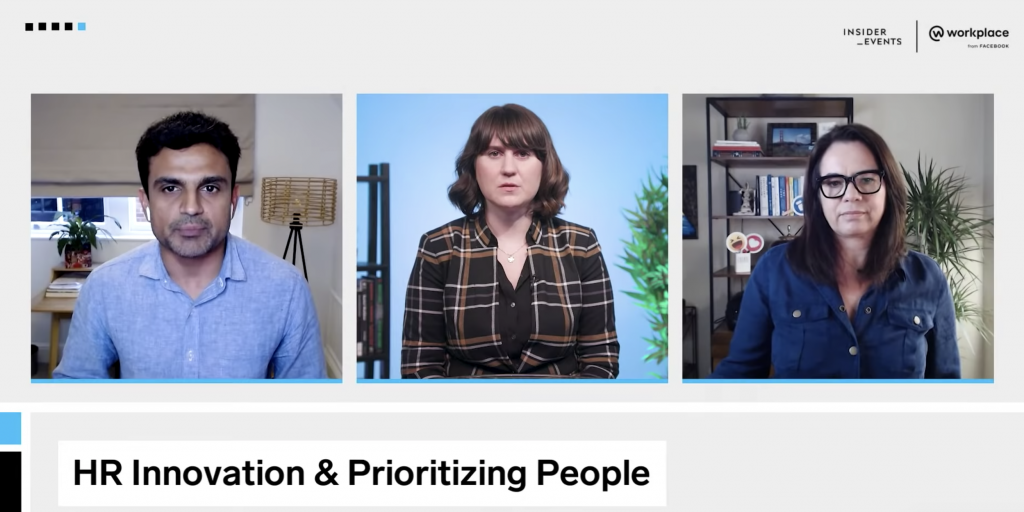
- Now's the time to innovate and evaluate your HR policies and tools, experts at Facebook say.
- Janis Avila, director of employee experience, said it's about making communication inclusive.
- This was part of Insider's "HR Innovation and Prioritizing People" presented by Workplace from Facebook.
The Great Resignation, where millions of workers are quitting and leaving employers struggling to fill open slots, is changing the future of work. Workplace from Facebook is one tool that HR professionals can use to work through the new landscape, panelists said during a session titled "Activating Innovation," a part of the event "HR Innovation and Prioritizing People" presented by Insider Events and Workplace from Facebook and moderated by Insider's entrepreneurship editor Emily Canal on Thursday.
The communication tool focuses on connecting people to their employers and the company's mission and accommodating hybrid work environments where people work in different locations and time zones. "It's specifically built around putting people first and foremost," Ujjwal Singh, head of product at Workplace from Facebook, said.
One of the benefits is that it builds off of existing Facebook tools that many people are already familiar with, such as Groups, Chat, and Live video. "So it's not a giant learning curve," Singh said. The tool also enables synchronous and asynchronous communication and offers employees the chance to give feedback on policies.
"That two-way feedback really is a key part of what we think is both necessary today and will be even more necessary going into the future," Singh said.
With the pandemic changing how people work long term and companies grappling with recruiting new talent, there are many opportunities to innovate HR, Janis Avila, director of employee experience at Facebook, said. "It's really about bringing in those competencies and skill sets around human-centered design, using people-first strategy, really doing rich listening, and aligning the experiences we want to deliver," she said.
Equity and inclusion are central parts of building authenticity and make employees feel comfortable showing their true selves, Singh said, and employers need to focus on it in terms of giving employees the same opportunities to connect and ensuring they can be equally productive regardless of their job or how or where they work.
"It's everyday behaviors, bringing in different people from different groups that you normally wouldn't," Avila said. "Are you looking for that different perspective or are you going to the same people over and over and using the same communication or the same tools in the same way?"
Facebook included several features in Workplace to create a sense of belonging - for example, a place for employees to include how to pronounce their names in their profiles, which also list their job titles and pronouns. They can also create emojis with different skin tones.
Companies need to understand how their employees' needs have changed and what they expect from their HR programs now, the panelists said.
"It's using design thinking and creative problem-solving and applying those skills and those competencies to HR and really building that muscle within HR to think differently," Avila said. "Try these things, to let go of old ways and move away from transactional and really reimagine the way we deliver our programs and our policies in our services."
